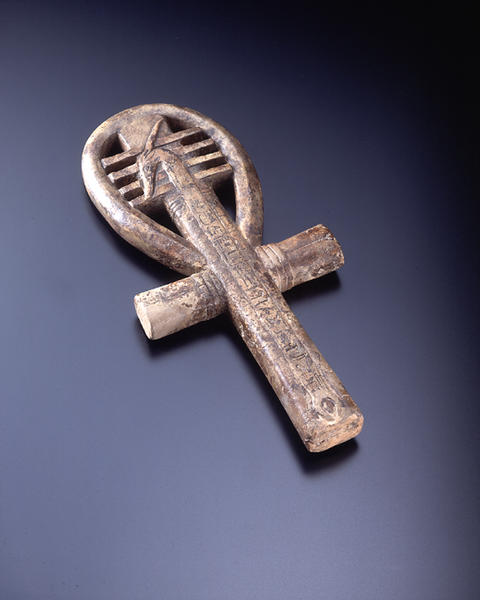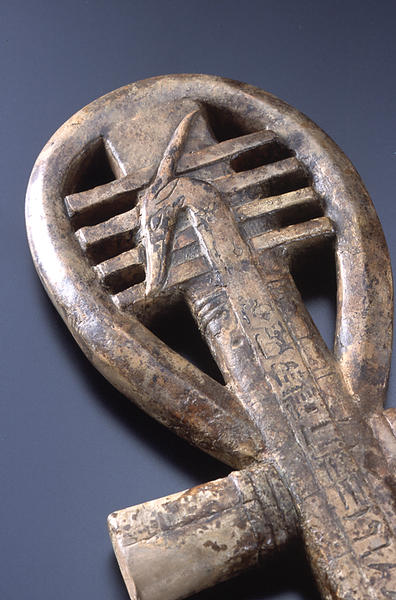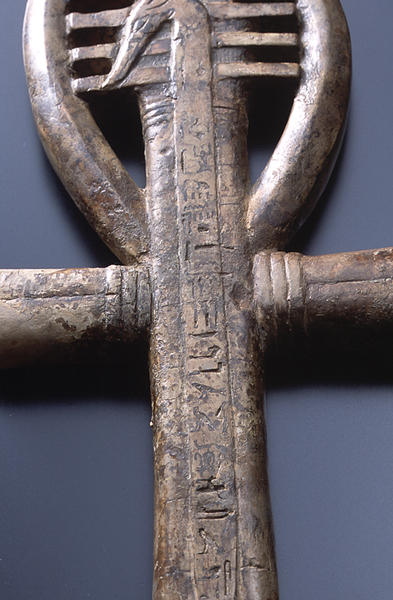Amulet
- Egypt
- 7th - 6th centuries B.C.
Catalogue Entry
This decorative amulet combines the heiroglyphs ankh, djed-pillar, and was-scepter. The djed-pillar pierces the circle of the ankh, and the was-scepter is layered on top. The was-scepter is carved in relief, and a section of its staff is inscribed with a single row of heiroglyphs. There is no depiction of the was-scepter on the verso, where the ankh and djed-pillar are shown in the same three-dimensional form as those on the recto. Ankh means life, while the djed-pillar means "stability," or "endurance." The was-scepter symbolizes "domination" and also implies wealth and happiness. The inscription includes the deity or aristocratic name "Mentu-em-hat?Es" which is thought to refer to a female, and prays that enjoyable years continue for eternity. The joint meanings of the three heiroglyphs seen in this amulet indicate that it would have been dedicated to the gods with fervent prayers. Judging from the size and shape of this amulet, it may have been used or carried at ritual ceremonies. A faience amulet that closely resembles this amulet is in the British Museum1). The British Museum work is approximately the same size as the Miho piece, and while its shape and design are essentially the same, the British Museum work includes heiroglyph which read "millions of years" above the djed-pillar. This heiroglyph is also used in the inscription on the Miho work, and thus the prayer evoked by both works is exactly the same. The British Museum work is said to have been excavated from the temple of king Taharka at Gebel Barkal in Nubia, and this raises suggestions about the origins and use of the Miho work. This Miho work is exceptional for its regular shape and is an important reference work in a consideration of religious rituals. While it has now weathered to a dark brown color originally it would have been made from an opaque turquoise glass which would have been cast and then had its details carved into the cast work.
1)?\?\?\Florence Dunn Friedman ed., Gifts of the Nile: Ancient Egyptian Faience, Providence, 1998, pp. 131, 226.


